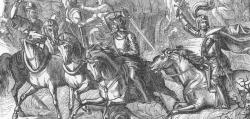3















| Thumbs Up |
| Received: 2,864 Given: 444 |

Hungarians are combination of various European regions, thus the only meta-ethnicity can be European, to be really very precise, East-Central European. The Conqueror Era Hungarians mostly were assimilated by the local Late Avar population of the Carpathian Basin, who were Europids.



















| Thumbs Up |
| Received: 5,410 Given: 6,858 |

calm down read the Turkic R1a-Z93 reality:
https://archive.org/details/andronovo-culture
Steppe MLBA confirmed Turkic:
















| Thumbs Up |
| Received: 3,020 Given: 4,752 |















| Thumbs Up |
| Received: 3,020 Given: 4,752 |

Last edited by Altaylı; 03-29-2021 at 10:16 AM.













| Thumbs Up |
| Received: 1,982 Given: 2,743 |

Geneticaly i would say Slavic/Eastern European as our Meta ethnicity because its the highest ethnicity among us. And after that i would say Paleo Balkan. And i think Paleo_Balkan is very underestimated among Hungarians while it contributes to our genetics most of the time more then Germanic.
just look at these results:
Target: Hungarian
Distance: 0.0063% / 0.00630961
54.9 Slavic
21.2 Germanic
16.2 Paleo_Balkan
6.0 Eastern_Mediterranean
1.7 Turkic
Target: Hungarian_Transdanubia+Budapest
Distance: 0.0148% / 0.01481887
52.5 Slavic
24.7 Germanic
13.8 Paleo_Balkan
7.7 Eastern_Mediterranean
1.3 Turkic
Target: Hungarian_Northern
Distance: 0.2701% / 0.27007709
65.0 Slavic
16.9 Paleo_Balkan
15.3 Germanic
1.7 Eastern_Mediterranean
1.1 Turkic
Target: Hungarian_Alföld
Distance: 0.0685% / 0.06849450
57.0 Slavic
18.3 Paleo_Balkan
18.1 Germanic
4.8 Eastern_Mediterranean
1.8 Turkic
Target: Hungarian_Transylvania_Szekely
Distance: 0.0563% / 0.05632593
45.2 Slavic
26.6 Paleo_Balkan
17.4 Germanic
6.5 Turkic
4.3 Eastern_Mediterranean
only western Hungary has higher Germanic then Paleo Balkan ancestry.














| Thumbs Up |
| Received: 5,409 Given: 5,264 |

Y no celtic in the poll tho?
There are currently 1 users browsing this thread. (0 members and 1 guests)
 Armenia
Armenia
Bookmarks